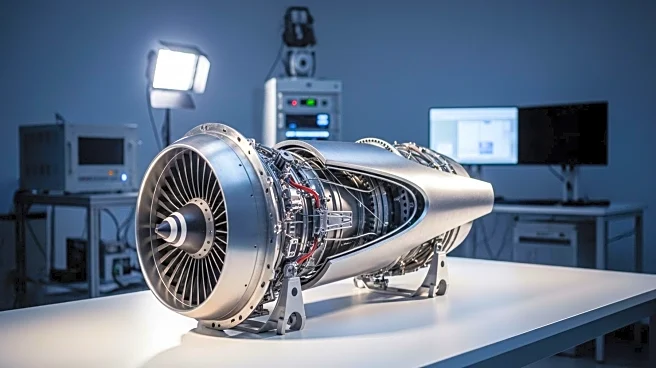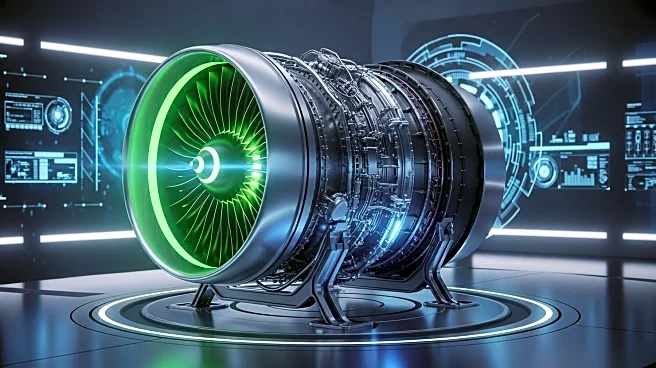What is the story about?
What's Happening?
Beehive Industries, a propulsion startup, is set to ship its first additively manufactured Frenzy engine for altitude tests at the U.S. Air Force Research Laboratory. This development follows a series of rapid initial tests conducted at Beehive's facilities in Cincinnati, Denver, and Knoxville, Tennessee. The company is developing the Frenzy engine family, which ranges from 100-lb to 300-lb thrust, under a $12.4 million agreement with the University of Dayton Research Institute, sponsored by the U.S. Air Force. Since the introduction of the Frenzy engine in late 2024, Beehive has accelerated its development process, achieving the First Engine to Test (FETT) in just five months. The company has tested four units so far, focusing initially on the 200 lb-thrust variant, with plans for high altitude testing and subsequent testing of a 100 lb-thrust version early next year. Production is targeted for 2026, with initial flight tests scheduled for early that year.
Why It's Important?
The development of the Frenzy engine by Beehive Industries represents a significant advancement in propulsion technology for uncrewed aircraft systems and swarming munitions. The low-cost, additively manufactured engines are designed to meet the growing demand for efficient and scalable propulsion solutions in defense applications. The successful testing and development of these engines could enhance the capabilities of the U.S. Air Force, providing more versatile and cost-effective options for military operations. The collaboration with the University of Dayton Research Institute and the U.S. Air Force underscores the strategic importance of this technology in national defense, potentially influencing future procurement and deployment strategies.
What's Next?
Beehive Industries plans to continue testing the Frenzy engine variants, with high altitude tests for the 200 lb-thrust engine and the introduction of the 100 lb-thrust version early next year. Production is slated to begin in 2026, with initial flight tests scheduled for early that year. The company is also working on developing a 1,000 lb-plus thrust engine called Rampart for Collaborative Combat Aircraft applications, leveraging experience from the 500-lb-thrust Peregrine technology demonstrator. These developments could lead to expanded applications and increased production capabilities, further solidifying Beehive's role in the defense sector.
Beyond the Headlines
Beehive Industries' focus on additively manufactured engines highlights the growing trend towards innovative manufacturing techniques in aerospace and defense. This approach not only reduces production costs but also allows for rapid prototyping and testing, accelerating the development cycle. The success of the Frenzy engine tests could pave the way for broader adoption of additive manufacturing in other sectors, potentially transforming traditional manufacturing processes and supply chains.
AI Generated Content
Do you find this article useful?















